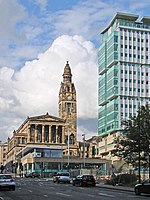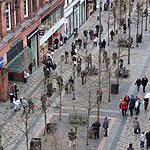Royal College of Physicians and Surgeons of Glasgow

The Royal College of Physicians and Surgeons of Glasgow is an institute of physicians and surgeons in Glasgow, Scotland. Founded by Peter Lowe after receiving a royal charter by James VI in 1599, as the Glasgow Faculty, it originally existed as a regulatory authority to ensure that physicians, surgeons and dentists In the West of Scotland were appropriately trained and regulated. In 1909, it achieved Royal recognition and became the Royal Faculty of Physicians and Surgeons of Glasgow (RFPSG). In 1962, following agreement with the other medical and surgical Royal Colleges in the UK it achieved collegiate status as the Royal College of Physicians and Surgeons of Glasgow (RCPSG), by which name it is known today.The College, in combination with the Royal College of Physicians of Edinburgh and the Royal College of Surgeons of Edinburgh provided a primary medical qualification which entitled the bearer to practice medicine, and was registerable with the General Medical Council as a primary medical qualification the Triple Qualification diploma (LRCP (Edinburgh), LRCS (Edinburgh), LRCPSG). From 1994, until the abolition of non-university qualifying examinations in 1999, this was offered through the United Examining Board. Until 1948 the Faculty (as it then was) provided dental education via the Glasgow Dental School awarding the qualification of LDS RFPSG. Since 1948 training in dentistry has been provided by the University of Glasgow who award the BDS degree. The College is now concerned with postgraduate medical education, offering examinations that lead to Membership and Fellowship to appropriately qualified physicians, surgeons, dental surgeons and podiatrists. They also offer a number of specialist postgraduate diplomas to medical practitioners in various subjects including dermatology, child health, geriatric medicine, travel health, ophthalmology, and dentistry.
Excerpt from the Wikipedia article Royal College of Physicians and Surgeons of Glasgow (License: CC BY-SA 3.0, Authors, Images).Royal College of Physicians and Surgeons of Glasgow
St Vincent Street, Glasgow Blythswood Hill
Geographical coordinates (GPS) Address Nearby Places Show on map
Geographical coordinates (GPS)
| Latitude | Longitude |
|---|---|
| N 55.86241 ° | E -4.263446 ° |
Address
St Vincent Street
St Vincent Street
G2 5SG Glasgow, Blythswood Hill
Scotland, United Kingdom
Open on Google Maps









